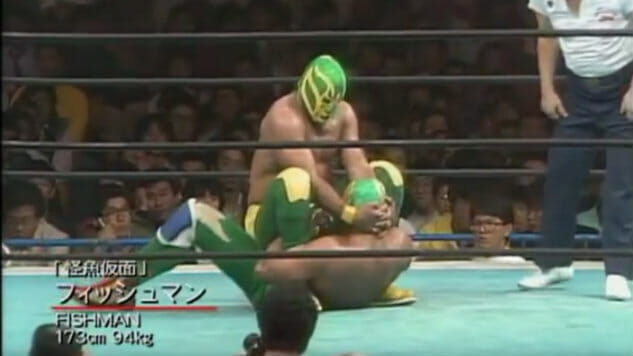The Forgotten Legacy of Lucha Legend Fishman
Photo courtesy LuchaLibreClasica on YouTube
Becoming a star in professional wrestling isn’t easy. You need a good look and compelling matches. You need opportunity and effort, and a non-trivial amount of luck. But it’s often taken for granted that, once a wrestler reaches those heights, their legacy is etched in stone. For José Ángel Nájera Sánchez, known throughout his native Mexico as Fishman, this was unfortunately not the case. He is a man who during his peak was regarded as a master of his craft, then faded, before sadly passing away April 8 with little fanfare. He was 66.
Fishman was one of the major stars of lucha libre in the late 1970s and early 1980s. With a distinctive and ornate green and gold mask, he stood out as imminently recognizable, and his mask was featured prominently in the colorized photos in Mexican sports magazines. As a youth, he claimed to favor the tactics of the evil rudos, and the brutal mat- and strike-based style he would later adopt recalled the antics of those men he idolized. By the early 1970s, after just a few active years, Fishman joined EMLL, the oldest and largest promotion in Mexico, where he would see his stock steadily rise, and where he eventually found himself victorious in a feud against Sangre Chicana and El Cobarde, unmasking both within a week of each other (the 1970s lucha equivalent of Jericho beating The Rock and Stone Cold in one night.)
-

-

-

-

-

-

-

-

-

-

-

-

-

-

-

-

-

-

-

-

-

-

-

-

-

-

-

-

-

-

-

-

-

-

-

-

-

-

-

-








































